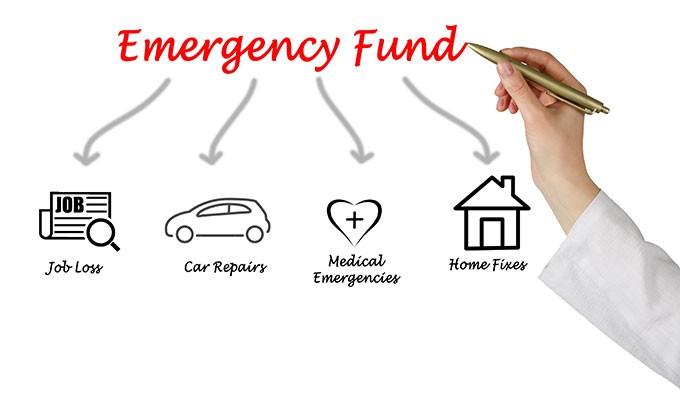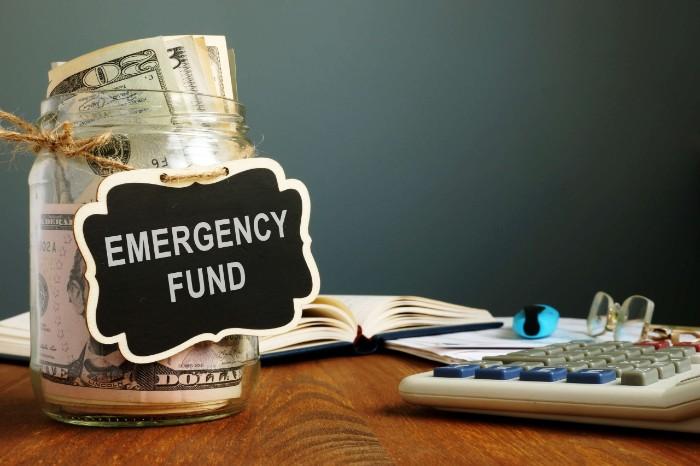How To Start An Emergency Fund
Dec 04, 2023 By Triston Martin
When it comes to financial preparedness, an emergency fund is essential. Emergencies can happen anytime and could cost you significant money if you’re not financially ready. Having an emergency fund set aside is the key to being able to cover those unexpected expenses without worry or stress about how exactly you are going to pay for them.
But how do you start setting up your emergency fund? In this blog post, we will explore some tips on how to get your savings journey off the ground and ensure that your backup plan is strong enough when life throws unexpected curveballs your way. Let’s consider what steps should be taken first to create that emergency safety net!
How to start an emergency fund

An emergency fund is a savings account that allows you to cash in an emergency. It should be used for unexpected expenses or large purchases rather than to pay off debt or extend your budget.
There are several ways to start an emergency fund, depending on your financial goals:
Set up automatic transfers from your checking to your savings account. When you set up an automatic transfer, you won’t even have to think about it – the money will be transferred monthly.
Commit to making regular deposits into your emergency fund. Determine how much you can afford to put away and ensure the amount is deposited regularly, monthly, or bi-weekly.
Make use of tax refunds and other windfalls. If you receive a large sum, like a tax refund, consider using some money to start your emergency fund.
Create a budget. Setting up and sticking to a budget ensures you allocate money to your emergency fund.
Consider a savings challenge. A savings challenge is setting aside weekly or monthly money to reach your emergency fund goal.
Put spare change into a jar or piggy bank and occasionally visit the bank with it. This helps encourage regular saving, even if it’s just a few coins each time.
Regardless of your choice, ensure you put away enough money to cover your expenses and any unexpected emergencies. An emergency fund is essential to financial planning and will help you better prepare for the future.
By taking these steps, you can start an emergency fund that will give you peace of mind and help ensure your financial security.
Determine how much you should save in an emergency fund.

Once you have determined the amount, you want to save for your emergency fund, create a budget and figure out how much of your income can reasonably go towards it each month. You may need to make lifestyle changes to save money for this purpose. Consider taking on an extra job or negotiating a raise at work.
Next, decide what account you will use to save your emergency fund. Look for a savings or money market account that allows you to access the funds quickly and easily when needed. Many accounts also offer higher interest rates than regular savings, so take advantage of this perk.
Once you have opened the account, set up automatic transfers each month. By setting up an automated system to fund your emergency fund, you can rest assured that it will build over time without remembering to transfer money manually.
Finally, review your emergency fund regularly and adjust for changes in your lifestyle or budget needs. As time passes, you may need to adjust the money you put into your emergency fund. Make sure that you are always prepared for unexpected expenses. Doing this will ensure you can maintain a healthy financial cushion in emergencies.
Following these steps will help you build an emergency fund and ensure you have the resources available should something unexpected happen. An emergency fund is a crucial part of any financial plan, so don’t forget to take the time to build it up and keep it funded.
Set up a budget to account for all your spending and determine how much you can put toward your emergency fund.
Creating a budget is an essential part of planning for your emergency fund. It lets you see your available money and how much can be devoted to your emergency fund each month. Many online tools, such as Mint or You Need A Budget (YNAB), make budgeting easier.
It would be best if you also considered creating a “rainy day fund,” a separate savings account used only for emergency purchases. This allows you to save the money that would otherwise go toward your emergency fund and allocate it to other expenses when needed.
Once you have established your budget and rainy day fund, track your progress. This will help you stay on top of your goals and ensure you stay within the limits of what you can afford.
Remember, having an emergency fund is a key part of financial planning, and it takes time and dedication to build one up. But by following these steps, you can be sure that you are prepared for any unexpected expense that may come your way.
Open a separate savings account specifically for your emergency fund
Once you have determined how much to save for your emergency fund, the next step is to find an appropriate savings account. Look for an account that offers higher interest rates than a regular savings account so that the money can grow over time.
Consider opening a separate savings account for your emergency fund. This will ensure that the money is kept separate from your regular savings and that you have quick access to it should an emergency arise.
Try to find a savings account with no minimum balance requirements or fees so that more of your money can go towards growing the emergency fund.
Finally, set up automatic transfers into this account so you always remember to add money to your emergency fund each month. Automating this process takes the guesswork out of saving and allows you to focus on other financial goals.
By following these steps, you can ensure you are well-prepared for unexpected expenses.
FAQs
What is an emergency fund?
An emergency fund is a savings account that helps to prepare you for unexpected financial emergencies. It allows instant access to funds when needed without borrowing money or using your credit cards.
How to start an emergency fund with no money
If you don't have any money to start an emergency fund, there are still steps you can take to get started. One option is to look for ways to save money in your budget. Try cutting back on unnecessary expenses, such as dining out or buying clothes you don't need. Once you find extra money in your budget, set up a separate account for your emergency fund.
How to start an emergency savings fund?
The best way to start an emergency savings fund is to set a goal for how much you'd like to save and then create a plan for reaching that goal. Start by setting up automatic transfers into your emergency fund account each month—it's easier than manually transferring funds every time.
Conclusion
An emergency fund is an essential tool for financial preparedness. By taking steps to set one up, you can ensure that unexpected expenses will be taken care of without causing too much stress. The key is to start small and stay dedicated to your savings plan; remember, you'll thank yourself later! To start building your emergency fund, create an organized budgeting plan considering various expenses like rent or insurance.

Nov 25, 2023 Susan Kelly

Jan 13, 2024 Triston Martin

Feb 19, 2024 Triston Martin

Jan 02, 2024 Susan Kelly

Jan 13, 2024 Triston Martin

Dec 09, 2023 Triston Martin